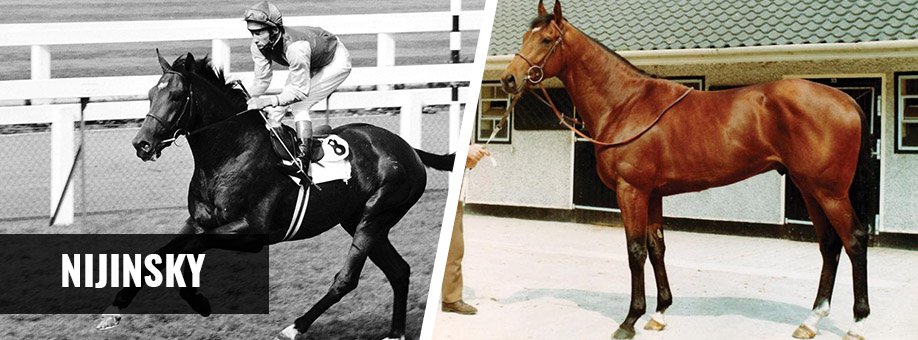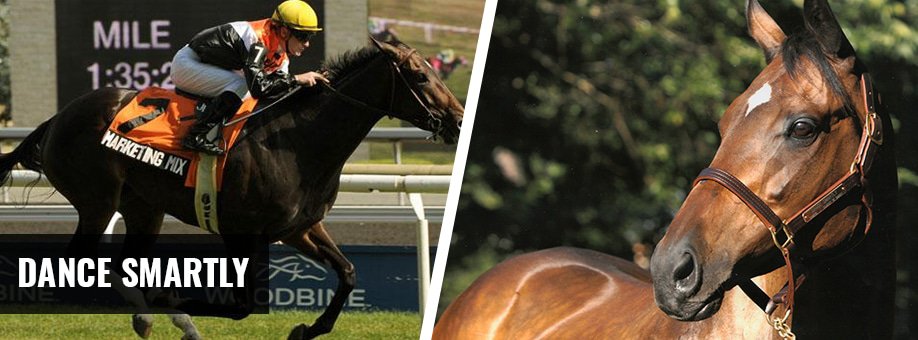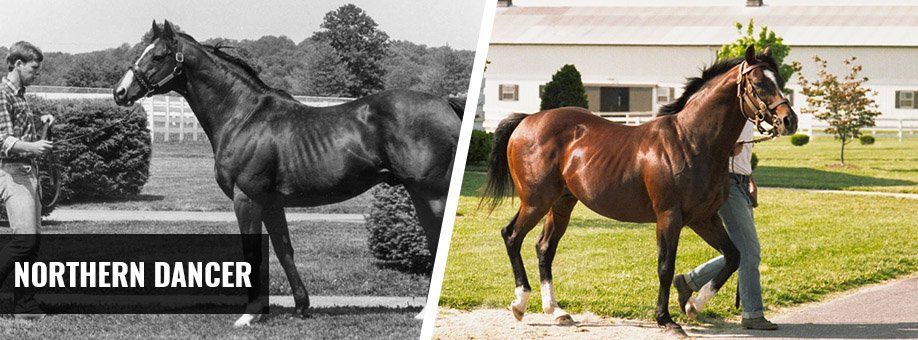Nijinsky - the Flat Canadian Race Horse Legend

One of Canada's greatest race horses is undoubtedly Nijinsky, a legend of the flat. Bred in Ontario at EP Taylor's Windfields Farm (just east of Toronto), he was from the second set of foals fathered by the outstanding Northern Dancer. His mother was Flaming Page, no mean race mare (she won the Queen's Plate in 1962). Nijinsky inherited his mother's size rather than that of his slightly small father, and, unlike his father, was bought at auction for $84,000. But would he live up to his top tier lineage?
Nijinsky was shipped off to Ireland, and in 1969 his racing career began with a quartet of races in Curragh, winning each and every one of them. Having dominated in Ireland, this Canadian racing horse made for England. His victory at the Dewhurst Stakes was a classic, coming from the back to secure the lead within the last furlong. His 1970, three year old season had a similarly strong start, with wins in the 2000 Guineas at Newmarket and then the Derby at Epsom. More wins followed but August brought misfortune in the form of ringworm, which impeded Nijinsky's training. But by September he was fighting fit and won the St. Leger to become the first horse for 35 years to win the English Triple Crown.
A narrow loss in the Prix de l'Arc de Triomphe at Longchamp was widely seen as unfortunate, with some questioning the approach of Nijinsky's jockey. Two weeks later, our horse hero made an appearance at the Champion Stakes. He was easily beaten and appeared well below par, and it ended up being Nijinsky's last race.
Nijinsky was highly regarded, being named as Timeform's Horse of the Year, and jockey Lester Piggott described him as the best horse he had ever ridden. He was also voted the Horse of the Millennium by readers of the British newspaper The Sun, polled in 2000.
When it comes to his stud performance, Nijinsky sired over 150 winners, including the 1986 Kentucky Derby winner and 1987 United States Horse of the Year Ferdinand. Better yet was the undefeated Lammtarra, whose notable successes included the King George VI and Queen Elizabeth Stakes and the Prix de l'Arc de Triomphe.
Dance Smartly - the Leading Lady

The leading lady in the world of Canadian race horses must surely be Dance Smartly, a hugely successful race mare bred in Ontario by Ernie Samuel. Perhaps marked for greatness, this bay horse had a highly distinctive white star on her forehead, leading to her nickname of 'Daisy'. She also benefited from a top class bloodline, being the offspring of Danzig, one of Northern Dancer's (see below) sons.
Dance Smartly's early career as a two year old began with winning more than half her races (three out of the first five), among which was the Natalma Stakes. When she reached the age of three years, however, Dance Smartly reached a whole new level of performance, achieving the fantastic feat in 1991 of going undefeated during the entirety of the racing season. A change of jockeys after the first two races (ridden by Brian Swatuk and then Pat Day) brought no change in fortune as she triumphed in the Star Shoot and Selene Stakes before winning the Canadian Oaks so handily it was decided she was ready to race against colts. Only one filly (Queensway) had won the Canadian Triple Crown of the Queen's Plate, the Prince of Wales Stakes, and the Breeders' Stakes, and that was all the way back in the interwar period (1932). But Dance Smartly rewrote the record books by sweeping the board and claiming the Triple Crown for her own star-studded brow.
Favouring a hoof is never a good thing and the filly missed out on weeks of training, but despite all that she still romped home to victory in the 1991 Breeders' Cup Distaff at Churchill Downs. After the epic season of 1991, Dance Smartly suffered an injury to her right foreleg, but was still able to compete and defeated her colt rivals in the Canadian Maturity Stakes before retiring from racing.
Dance Smartly entered the world of the broodmare, and gave birth to some top class performers. Scatter the Gold and Dancethruthedawn were two of them, and won the Queen's Plate in consecutive years. In 1995 she took her place in the Canadian Horse Racing Hall of Fame. Eight years later she was inducted into the National Museum of Racing and Hall of Fame at Saratoga Springs.
Northern Dancer - the Best Race Horse in Canadian History?

And so we come to our final race horse from Canada, and one that is widely regarded as one of, if not the, very best champions that the country has ever produced. The legendary status of Northern Dancer today stands in stark contrast to what seemed a far from promising beginning. Which is slightly unusual, as Northern Dancer was a product of the renowned horse breeder EP Taylor. But in 1962, despite this origin, things looked distinctly subpar. At the time EP Taylor horses tended to command prices of $25,000 as a minimum. Come the auction, Northern Dancer's name came up. And no-one bid.
A wise man once made the point that it was foolish to judge individuals based on their size, but this may well have been what happened. Northern Dancer was on the short side for a thoroughbred, at 14 hands tall (a hand taller when full-grown). The bay colt did not attract the typical price and attention that most of EP Taylor's horses did, and the breeder decided instead to retain the horse for himself. It is something of a historic irony that Canada's greatest race horse was literally seen as not worth buying by the experts of the racing community back in the 1960s. But their misjudgement turned out to be the breeder's gain. Another wise choice that Taylor made was to refuse to geld Northern Dancer, something that trainer Horatio Luro had suggested. The spirited, sometimes unruly, stallion would have been relieved had he known, but this also became another great decision by Taylor in due time.
In 1963 Northern Dancer made his racing debut, and won the race for a purse of $2,100. Out of his first nine races, he won seven of them. Not bad for a horse nobody wanted. But it was in 1964 that Northern Dancer achieved one of his career milestones and that took him from being a merely good horse to being considered a great one. More strong performances increased the standing of Northern Dancer, with multiple wins, before entering the Kentucky Derby. No Canadian race horse had ever won the iconic event, but Northern Dancer was the bookie's second favourite (behind Hill Rise). Hill Rise was behind in the last quarter mile but was gaining ground on Northern Dancer, yet our Canadian legend held on to win narrowly. Even though horse racing is one of Canada's top sports for betting the bookies aren't always correct.
Northern Dancer was also the second favourite in the 1964 Preakness Stakes, again behind Hill Rise in the betting world's estimation, but the race horse from Canada proved victorious once more. Although he failed to secure the Triple Crown, it had been a fantastic year for the horse. Returning to Canada, Northern Dancer won the Queen's Plate (one of the most bet on races on the calendar) and became the only horse to take the win both there and in the Kentucky Derby. Sadly, a bowed tendon brought his racing career to a premature end.
Northern Dancer was named the 1964 Canadian Athlete of the Year, and, the following year, was inducted into the Canadian Sports Hall of Fame. His work was not done, however, and Canada's greatest race horse embarked upon a second phase of life as a stud, breeding with dozens of mares to sire 21 foals in 1966. Almost half became stakes winners, and Viceregal was named Canadian Horse of the Year. Another of his progeny, Nijinsky, became the first horse to win the English Triple Crown for 35 years. In the end, Northern Dancer was one of the greatest sires in the horse racing world. At the age of 20, an offer of US$40m by a syndicate was rejected. Quite the turn around for the horse nobody would pay C$25,000 for in the early 1960s.
And that wraps up our top race horses from Canada. It's a supreme irony that so many of the greatest horses are descended from the one the breeder had to keep because nobody would make a bid. If only these horses were around when Canadians could place bets at Mr Green Casino and Sportsbook. The good news is the good stock from the three legends above are still racing around the world today.
